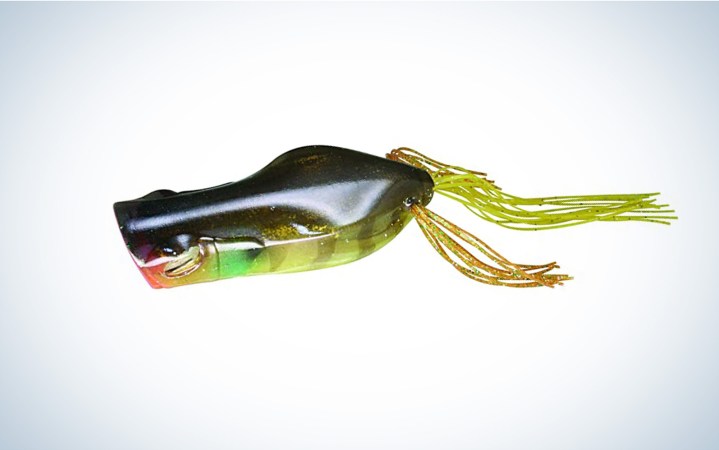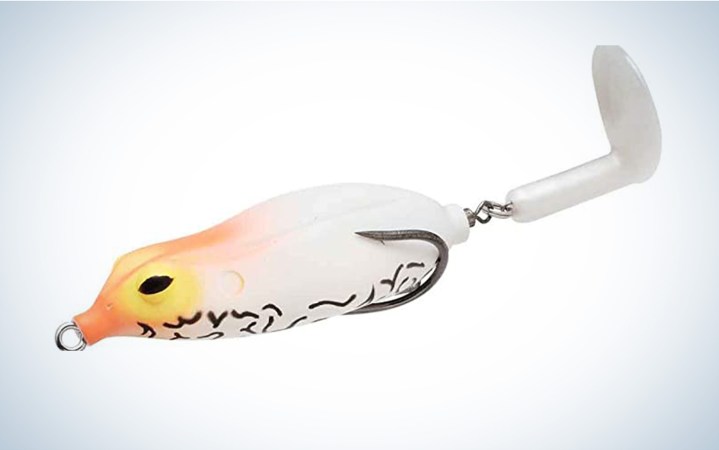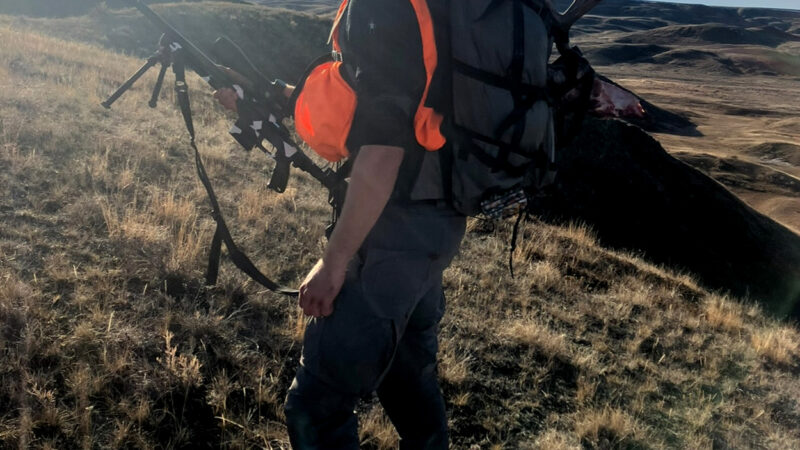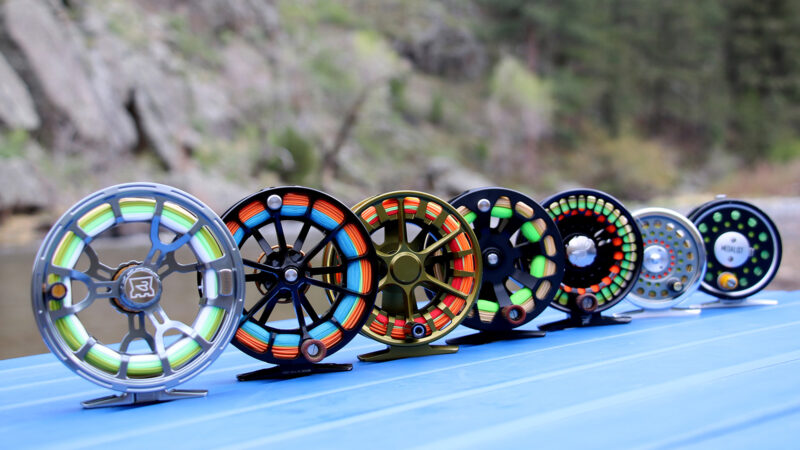How to Catch Bass on Frog Baits
We may earn revenue from the products available on this page and participate in affiliate programs. Learn More ›
Watching a massive bass blow up on a topwater frog bait is one of the most thrilling moments in all of fishing. In a single instant, you get to witness the power, aggression, and speed of our most prominent and willing freshwater predator. The ferocious strike always seems like a miracle, and yet it’s totally inevitable on the best bass water around the country. That’s why frog fishing for bass is one of the most popular tactics of summer.
But to consistently catch bass on frog baits, you’ve got to understand frog bait styles, tackle selection, and how bass attack their prey. We’ll cover all of that in this complete guide to frog fishing for bass, plus some tips and tactics from the pros.
How to Hook and Land Bass on a Frog Bait
Sometimes getting bass to hit a frog bait is the easy part. This tactic is notorious for missed strikes. It may seem like you need to match the fish’s speed and power with your hookset, which is partially true, but patience is the real key to more successful swings. You’ve got to understand bass as predators and know exactly how they eat their prey. —Alex Robinson

1. The Ambush
Bass are ambush predators and predatory generalists (read: what do bass eat). He’s not hunting for frogs exclusively but waiting for any vulnerable prey to swim by. He detects the vibrations of your frog through his lateral line usually before he ever sees it. The bass may strike in a flash without warning or, if he is especially big, he may flick lily pads with his tail on the way to your bait, a subtle sign of an imminent strike.
2. The Eat
He creates suction by dropping his lower jaw and flaring his gills as he attacks. Even if it’s not a direct hit, he’ll likely gulp the bait into his mouth. There are a wide variety of bass strikes (including fully airborne ones), but the most frustrating scenario is when a bass smashes the lure but doesn’t eat it. When this happens, don’t swing. Let the lure sit twitching—like it’s crippled prey. The bass may come back for it.
3. The Turn
Bass prefer to eat their prey headfirst, and, if you’re lucky, he’ll gulp the entire frog. Oftentimes, he’ll grab the frog by the head and then shift it around in his mouth while he turns back to cover. Studies have shown that bass can travel about 5 feet in a single second. The average human reaction time is about a quarter second. He’s moving much faster than you are, but if you set the hook now, you’ll still miss him.
4. The Hook Set
You must give the bass time to reposition the bait in his mouth so that your hooks have a chance to hit home. This is the hardest part for rookie frog anglers. Wait a full “one Mississippi” after the strike before swinging on the fish. Then keep the pressure on, crank hard, and lift the rod tip high to fight him out of cover. Sometimes you’ll swing and miss, but that just builds anticipation for the next strike.
How to Pick a Frog Bait Style and Color
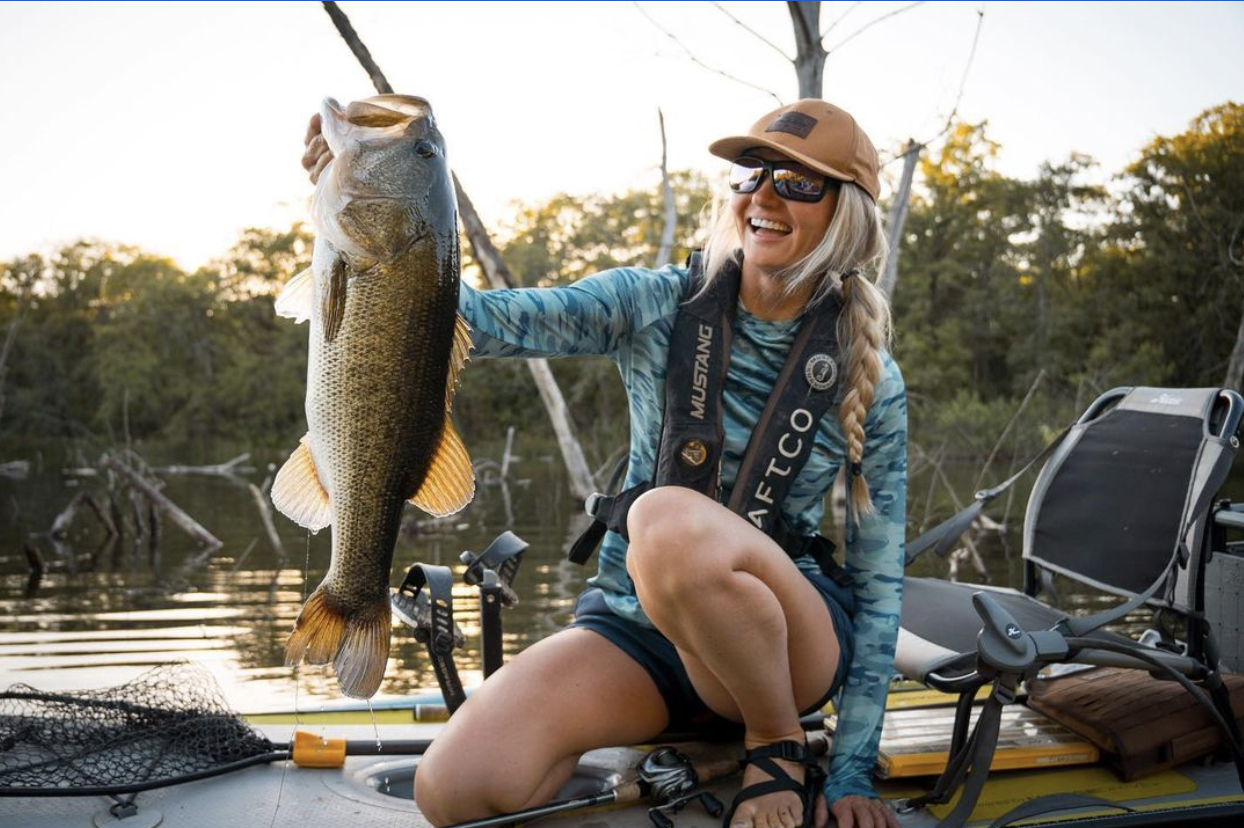
You can’t just chuck any old frog bait into the pads and pray—at least not if you want to hook into giant consistently. So, I am going to breakdown the top frog bait styles, and where to fish them to give you more confidence for catching bass with frogs. —Kristine Fischer
Hollow-Bodied Frog
The hollow-bodied frog is the most popular, standard frog bait. It consists of a pointed nose and a hollow body for buoyancy. Most styles feature long rubber strands that act as “legs” and give the frog a little more “life”.
The pointed nose is designed to help the frog maneuver around heavy cover, making it ideal in the lily pads, brush, and emergent vegetation. These frogs also shine on top of deep and shallow matted grass.
READ NEXT: Best Frog Lures
Poppin’ Frog
Poppin’ frogs are hollow bodied with a Pop’R or “scoop” style mouth, which allows it to make considerable commotion on the surface. These frogs typically walk well, and are often intended to mimic baitfish, in addition to an actual frog.
Because of its construction, this frog doesn’t come through heavy vegetation nearly as well as it’s pointed-nose cousin. However, the poppin’ frog will move some water and make noise, which is ideal for fishing open water. In addition to open water, this frog is a great option in when fishing around rip rap, docks, and laydowns.
Swimming Frog
Made in hollow or solid plastic bodies, I refer to these baits as swimming frogs because they are usually fished much faster, with a straight retrieve. Some of the hollow bodied styles have a solid paddle tail trailer or two mobile solid legs that give the bait a lot of action as it moves across the water or sparse vegetation.
I fish a swimming frog like a finesse style buzz bait. They make a little less commotion but are fished the same. This style of frog shines when an angler needs to cover water without getting hung up. Unlike a buzz bait, these baits are essentially weedless, so you can fish them over grass, pads, and through a lay-down without it hanging up.
Frog Bait Colors
Now that we’ve covered your basic types of frogs and where to fish them, let’s talk colors. One of the biggest misconceptions of frog fishing is that the frog is supposed to represent a frog. Anglers need to keep in mind that more times than not, bass are feeding on bream, shad and other baitfish, so “matching the hatch” is important. Knowing this, an angler can almost always get away with just 3 colors for any bass fishing water in the country: white, black, and some sort of “bluegill” color.
When to Use a White Frog: This is an obvious choice when bass are keyed in on shad, but I also like white on cloudy, low vis days.
When to Use a Black Frog: This is my go-to for muddy water, as it helps create a more defined silhouette that fish can see easier.
When to Use a Bluegill-Colored Frog: This is an obvious color choice when fish are up shallow feeding on bream, and when fishing around bream beds. But this is also a color I’ll always have tied on when the water has good clarity.
Great Frogs
- Finesse: Deps Slither K
- Covering Water: Teckel Sprinker
- Versatile: Jackal Gavacho
- Walking: Spro Bronzeye
Tackle for Frog Fishing
Catching bass on a frog doesn’t require an expensive rod or a complex setup. You need a rod that has enough length to cast far, enough power to haul bass out of weeds, and a stiff enough action to drive the hooks. That means a rod that’s 7 to 8 feet, has heavy to extra-heavy power, and has a fast action. If you’re in the market for a baticasting combo, you’ll be limited to a medium heavy power, which is versatile rod that can work for fishing a frog. But, I’d suggest sticking with the smaller offerings like a Jackal Kaera or Deps Slither K. Here are some of the best frog rods across a range of budgets.
Frog Rods
- Under $100: 13 Fishing Fate V3
- Around $100: Dobyns Fury
- No Budget: Daiwa Steez AGS Frog
Fishing a drop shot requires a smooth drag and a dainty reel to balance a light spinning rod. A frog reel on the other hand, needs to do battle with fish in a muddy and cover-abundant arena. So you need a reel that can silt in its mechanisms and have its gears pushed to their limits day after day. You also need a reel with a fast gear ratio. The fast retrieve will allow you to wind up the slack fish create when they strike. It’ll also allow you to burn a frog in once it’s out of productive water and fire it back out.
If you’re on a budget, I recommend spending a little less on a rod, so you can buy a reel that won’t crap out on you. The Daiwa Tatula and Shimano SLX are under $200 and both solid options for frogging. If you want a reel that will allow you to cast frogs straight across a pad field, get the Curado DC.
Frog Reels
Line is simple for frogging. You want heavy braid that will cut through vegetation. I like 80-pound Power Pro Maxcuatro and I tie my frog directly to the braid with a palomar knot. If you’re concerned about line capacity, the 65-pound option will work too. — Scott Einsmann, gear editor
READ NEXT: Best Frog Rods
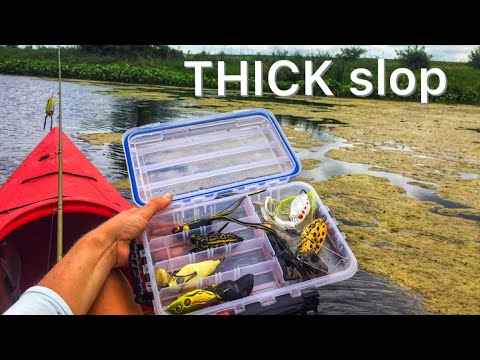
Frog Fishing for Bass: Tips and Hacks
Boil your frog. Many frogs are rigid when they are new, and this could prevent you from getting a solid hookset. To make the frog “collapse” better, place the plastic body of the frog in boiling water for a few seconds. This will soften the body and help the hook penetrate better.
Add a rattle. You can find aftermarket rattles in most tackle shops that you can add to give your bait extra noise. This can be a great addition when fishing open water. You simply insert the rattle inside the body of the frog.
Add tungsten or lead bullet weight. Adding a bullet weight into the body of the frog when you’re fishing extra-thick mats helps the frog “settle” into the mats better so you’re able to effectively work the frog.
Trim the legs. The original legs on the frogs are usually very long. Long legs create drag in the water and make it very difficult to walk the frog. I like keeping the length, so I vary the trim on the strands to where I am “thinning” the legs without taking away too much length. —Kristine Fischer
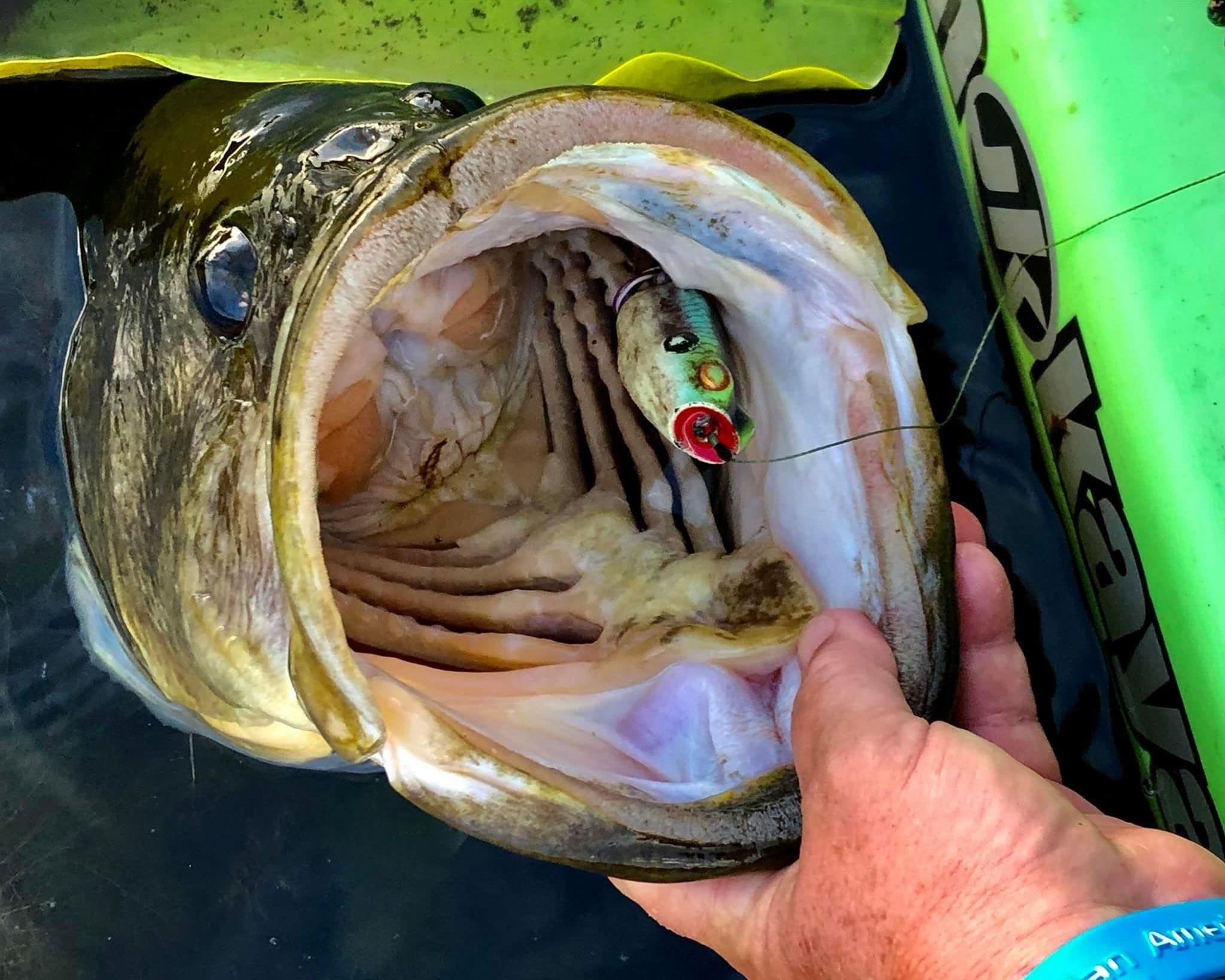
Use Heavy Line
Most of the time if you’re tying on a hollow-body frog, you’re intending to cast it into heavy cover like lily pads or over surface weed mats. This means there’s very little benefit to a fluorocarbon leader, because in the cabbage, fish aren’t likely to notice your braided line and get turned off. They’re simply going to react to the sound and movement of the bait when it gets right in their faces. When they attack, you want as direct a connection as possible to set the hooks with a lot of force and then muscle the fish out of the vegetation quickly. In this scenario, a splice knot or swivel connecting a leader is just going to create a weak point that could fail under the strain.
Read Next: A Guide to Largemouth Bass vs Smallmouth Bass
Don’t be afraid to put 40- or 50-pound braid on your frogging reel. Just make sure you’re also using a rod with some extra backbone and power that can handle hard sets and horsing fish out of cover. I tie my hollow-body frogs on with a simple Palomar knot. There are other braid knots that hold well, too, just remember that knots like the clinch that work well with monofilament have a tendency to slip when tied with slick braid.
Tweak Your Hooks
Grab your frog arsenal out of the garage and take a minute to study the hooks. Quite often, you’ll notice that the points lay even with the bait’s back, or they may be angled down slightly. Keep in mind that before any frog’s hook grab meat inside a fish’s mouth, the body of the frog has to compress and expose those points. The faster they expose, the more likely you are to connect, so if your frog has flat or downward-facing points, here’s a little tweak.
Find two pairs of pliers and use one to get a firm grip on the hook shank as close to the body as possible. With the other pair, grip the shank closer to the hook bends. Now, bend the hook shank downward away from the body. The goal is to get the hook points angled up. As a reference, you want the points even with the bait’s back, but not extending over the back or else the frog won’t be as weedless. —Joe Cermele
Frog Fishing for Tips from Ish Monroe
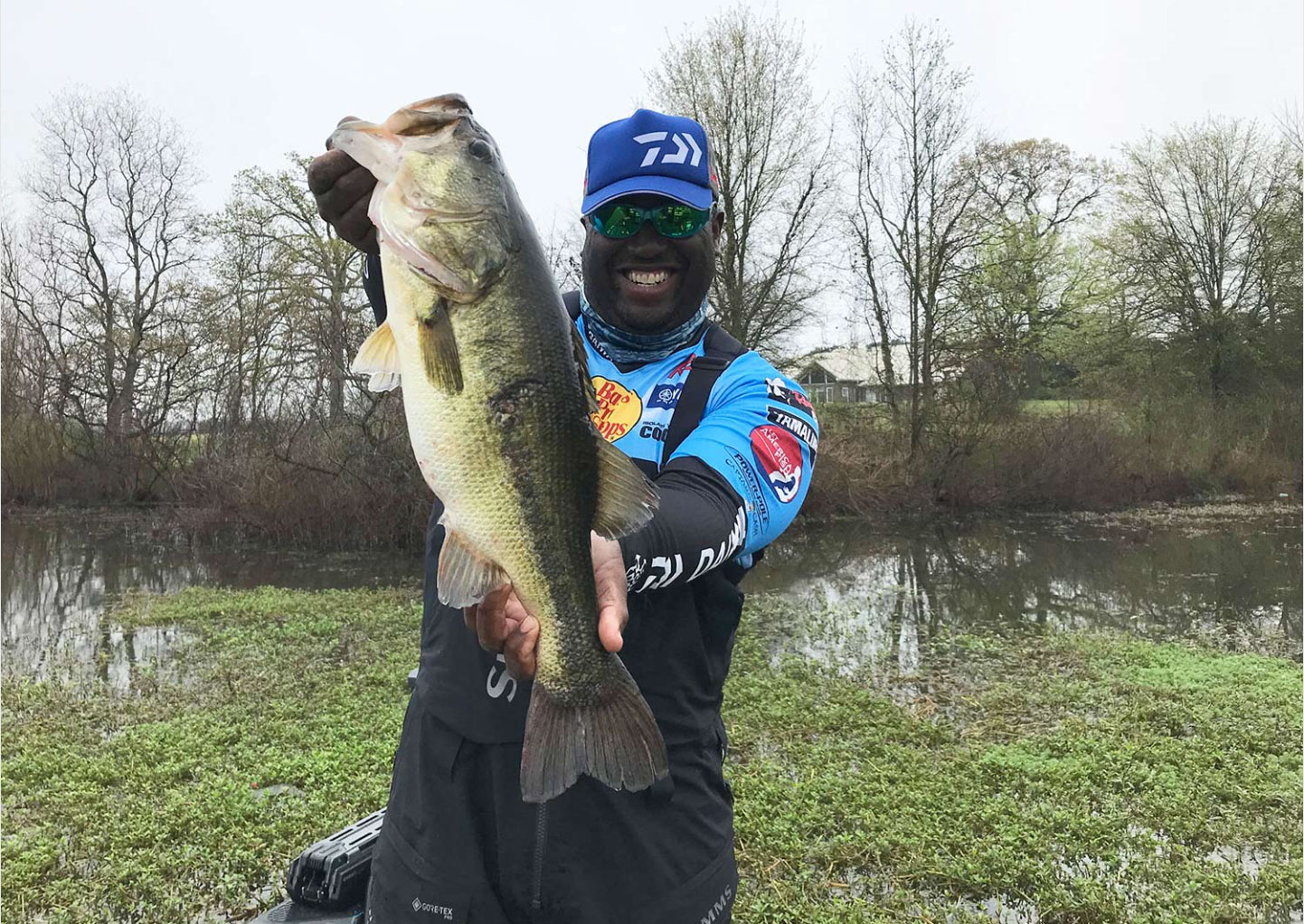
Major League Fishing’s Ish Monroe is the man when it comes to catching big bass with a frog. With nine majors and 51 top 10s, his career earnings total over $2.2 million. So we sat down with Monroe to find out how he catches bass with frog baits. Here is what he had to say.
Outdoor Life: Is it best to keep frogs moving or let it sit? How do I know which to do?
Ish Monroe: Let the fish dictate what they want. If they don’t respond to the moving, then stop and pause. Fish have to dictate and you will need to experiment to figure it out.
OL: Do you set the hook differently when fishing frogs as opposed to other lures?
IM: With the frog, you want to set the hook at 1 o’clock or 11 o’clock; never swing to 3 o’clock or downward so you can be sure to hook the fish in the top of the mouth.
OL: Where should I fish frog baits to catch bass?
IM: There is not one lake in the country that I don’t think you can catch’em on a frog. Frogs work in the shallows of the Sabine River (Texas/Louisiana) and the depths of Lake Mead (Arizona/Nevada). You can fish a frog around any type of structure—grass, wood, rock, docks, over-hanging trees—as long as they have the opportunity to see it. On lakes with vegetation, such as matted milfoil or hydrilla, I look for points, cuts, little pockets, and other irregularities. I want to find them close to deeper water, too, so bass can feed on shad and bluegills in the grass and then have the security of deep water nearby.
But the frog is a very versatile lure. One of the biggest keys to mastering them is to learn to “walk the frog.” Frogs can be great in open water because they’re subtle. A lot of guys will throw topwater baits, like a Spook, but a bass may not want something that loud. Sometimes they do, of course. But I throw the frog a lot in open water or along open shorelines. It’s great in those situations.
Shoreline riprap along road causeways is one of my favorite targets in the pre-spawn, spawn, and post-spawn periods. Typically, fish are on or near hard bottom, forage is abundant, and bass can spawn on or near the rocks. It’s a perfect setup for frogs. Those same areas sometimes get pockets of wind-blown vegetation earlier in the year, too.
OL: What’s the best time to fish a frog bait for bass?
IM: Anytime the water temperature is consistently 56 degrees or more, for me it’s game on,” Monroe says. “It can be overcast or sunny, morning, noon, or night—they will eat a frog. The only time I don’t throw one is when it’s cold or when it’s too windy, when you can’t see the frog. If I can’t see it, then they can’t see it. If the wind is blowing and waves are rolling, they can’t home in on it. There’s too much going on. But if it’s calm or there’s just a little ripple, they can see it and will come eat it.”
OL: Do you ever use scents with frogs?
IM: No scents at all. I might use worm rattles inside the legs; I’ve even used cat bells for noise, but no scents.
OL: What size frog bait should I use and when?
IM: I make the Ish Monroe River2Sea Phat Mat Daddy frog in one size because it’s the only size you need. During Stage 3 of the Bass Pro Tour in March, when I caught eight scorable bass for 34 pounds on day one, it was all with the frog. Great day on Lake Fork, even though it was pre-spawn, there was lots of cover.
Final Thoughts on Catching Bass with a Frog
Not only can frogging produce giant bass, it’s also an incredibly fun way to catch fish. If you want to succeed, remember these final few tips: Use a stiff rod and heavy line. Allow a bass a second to get the frog in their mouth before you swing for a hookset. Bass are ambush feeders, so look for irregularities in thick vegetation where they might be waiting to strike, like a point, edge, pothole, shade line, or where there’s a mix of cover.
The post How to Catch Bass on Frog Baits appeared first on Outdoor Life.
Source: https://www.outdoorlife.com/fishing/how-to-catch-bass-on-frog-baits/


